Ultratrace Element Analysis of Nanoparticles
Ultratrace Element Analysis of Nanoparticles
Concerned about contamination and release of nanoparticles into the environment? TXRF (Total reflection X-Ray Fluorescence) is a method of trace element analysis, ideal for detecting nanoparticles. It is a sensitive and convenient analytical method, with easy sample preparation and lower running costs than alternative techniques. The new Bruker S4 TStar TXRF spectrometer extremely versatile and can be used in R&D, quality control, environmental monitoring and more.
Blue Scientific is the official UK distributor of Bruker TXRF instruments. If you have any questions or if you would like a quote, please get in touch:
Contact us on +44 (0)1223 422 269 or info@blue-scientific.com
Bruker S4 TStar
S4 TStar TXRF Spectrometer
The Bruker S4 TStar is a new benchtop TXRF spectrometer for fast quantitative and semi-quantitative multi-element microanalysis of liquids, suspensions and solids. Samples are placed directly on carriers for analysis, without complex sample preparation routines.
Detection limits are in the sub-ppb range for trace element analysis. Automatic quality control features mean that results are consistently accurate and reliable.
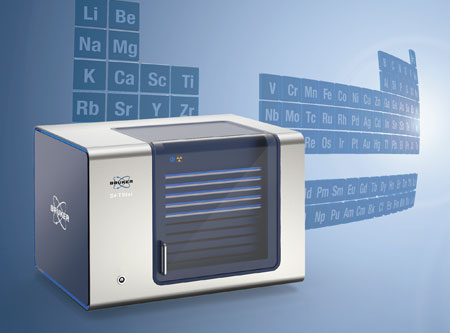
Nanoparticle Characterisation
Only very small sample amounts are required for TXRF analysis, so it is ideal for R&D work. In semi-quantitative analysis, for example calculating element ratios, TXRF is non-destructive and the sample can be recovered.
In this example, the element ratios are determined in CdSe nanoparticles coated with ZnS.
Sample preparation is very straightforward. A few particles are placed onto a quartz sample carrier using a cotton bud; they are then ready for analysis.
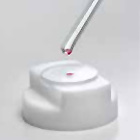
Simple sample preparation
The results for three samples are shown below. All three have comparable compositions and correspond with the target values.
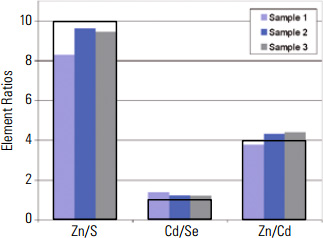
Element ratios of coated nanoparticles. The black boxes indicate the target values.
Detection Limits for Nanoparticles in Solution
Monitoring levels of nanoparticles released into the environment requires extremely sensitive analytical technology. In this next example, TiO2 nanoparticles are diluted and measured using TXRF.
1 ml of nanoparticle solution was diluted with 10 µl Ga standard solution (100 mg/l). The nanoparticle solution contained approximately 1 mg/l TiO2. The solution was diluted in steps, up to a factor of 100. 10 µl of each solution was transferred to a quartz carrier and measured for 1000 s.
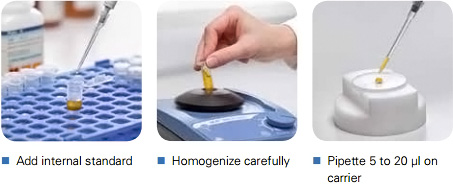
TXRF liquid sample preparation
The table below shows the concentration of TiO2 in the solutions. The detection limit for the nanoparticles was found to be 3.7 µg/l.
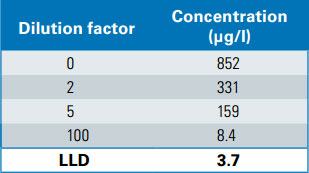
Diluted solution of TiO2 nanoparticles
Analysing Nanoparticle Coatings
In this experiment, the amount of Ru coating on TiO2 nanoparticles was measured.
Around 40 mg (exact weight required) of nanoparticles was re-suspended in 2.5 ml Triton X-100. After adding 10 µl internal Ga standard (1 g/l) and careful homogenisation, 10 µl suspension was transferred to a quartz carrier and measured for 120 seconds with TXRF.
The spectrum is shown below. The quantity of Ru was found to be 72 µg/l, which was corresponds with results from ICP (65 µg/l).
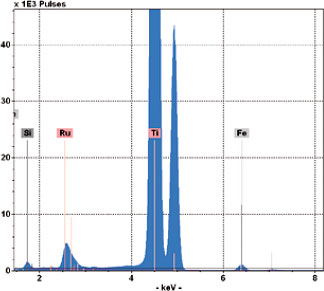
Spectrum of TiO2 nanoparticles coated with Ru
More About TXRF
As shown in these example experiments, TXRF is a fast and simple method for accurate trace element analysis of nanoparticles. It is a versatile analytical technique, which can be used in R&D, quality control, environmental monitoring and more. For more information, or to find out if TXRF would be suitable for your area of work, contact us:
Contact us on +44 (0)1223 422 269 or info@blue-scientific.com
Bruker S4 TStar
Image in top banner by User Mstroeck on en.wikipedia – Originally from en.wikipedia, CC BY-SA 3.0, https://commons.wikimedia.org/w/index.php?curid=15358989


